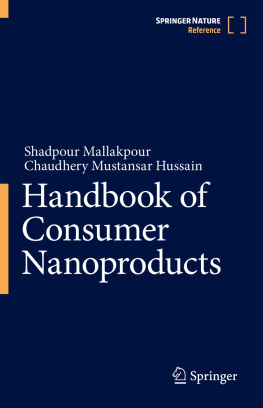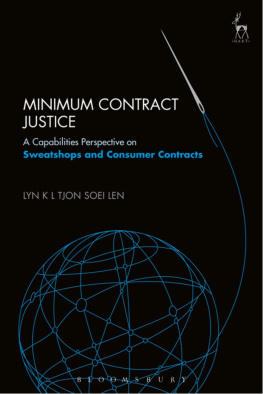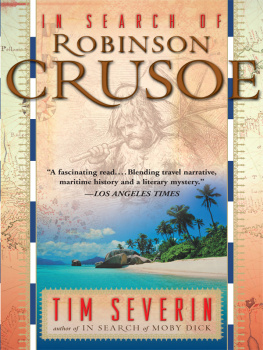Severin Bischof - Consumer Goods Subscriptions
Here you can read online Severin Bischof - Consumer Goods Subscriptions full text of the book (entire story) in english for free. Download pdf and epub, get meaning, cover and reviews about this ebook. year: 2021, publisher: De Gruyter, genre: Home and family. Description of the work, (preface) as well as reviews are available. Best literature library LitArk.com created for fans of good reading and offers a wide selection of genres:
Romance novel
Science fiction
Adventure
Detective
Science
History
Home and family
Prose
Art
Politics
Computer
Non-fiction
Religion
Business
Children
Humor
Choose a favorite category and find really read worthwhile books. Enjoy immersion in the world of imagination, feel the emotions of the characters or learn something new for yourself, make an fascinating discovery.

- Book:Consumer Goods Subscriptions
- Author:
- Publisher:De Gruyter
- Genre:
- Year:2021
- Rating:5 / 5
- Favourites:Add to favourites
- Your mark:
- 100
- 1
- 2
- 3
- 4
- 5
Consumer Goods Subscriptions: summary, description and annotation
We offer to read an annotation, description, summary or preface (depends on what the author of the book "Consumer Goods Subscriptions" wrote himself). If you haven't found the necessary information about the book — write in the comments, we will try to find it.
Consumer Goods Subscriptions — read online for free the complete book (whole text) full work
Below is the text of the book, divided by pages. System saving the place of the last page read, allows you to conveniently read the book "Consumer Goods Subscriptions" online for free, without having to search again every time where you left off. Put a bookmark, and you can go to the page where you finished reading at any time.
Font size:
Interval:
Bookmark:
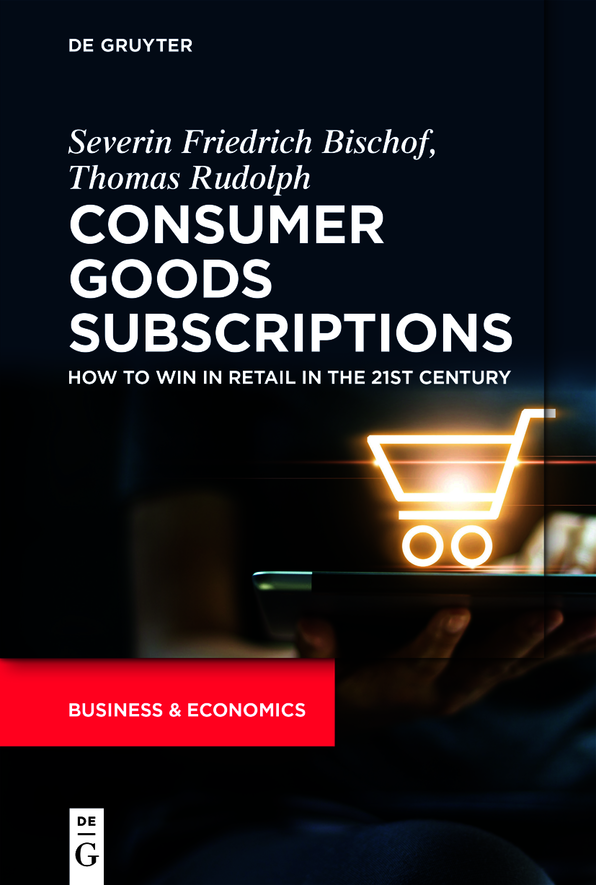
ISBN 9783110735116
e-ISBN (PDF) 9783110730197
e-ISBN (EPUB) 9783110730265
Bibliographic information published by the Deutsche Nationalbibliothek
The Deutsche Nationalbibliothek lists this publication in the Deutsche Nationalbibliografie; detailed bibliographic data are available on the Internet at http://dnb.dnb.de.
2022 Walter de Gruyter GmbH, Berlin/Boston
When was the last time that you bought a song as an MP3 file? This probably seems as obsolete as buying a CD, let alone a vinyl record. Mind you the latter are currently experiencing a small renaissance. But let us not digress. The fact is that you are probably using one of the more common streaming services (e.g., Spotify, Apple Music, or Deezer) to listen to your favorite music. Presumably, you will not even notice that you are no longer paying to listen to (i.e., consume) a single song; that, to be sure, is a thing of the past. Paying monthly flat rates has probably become so burdensome that you consider regular charges such as your Netflix streaming subscription to be perfectly normal. The point is that exactly this subscription mechanism is spreading rapidly in todays consumer society and there is no end in sight.
Subscriptioning is spreading like wildfire. For example, Porsche enables consumers to drive a wide range of Porsche sports cars in selected US cities if they take out a monthly Porsche Drive subscription starting at $2,100 (). Depending on whether consumers need a convertible (for a beach trip) or a sport utility vehicle (SUV) (for a skiing holiday), the Porsche subscription offers the same flexibility. Compared to the approximately $1,000 needed to lease a Porsche Cayenne, the subscription provider charges handsomely for this flexibility the subscription requires neither a minimum term nor a 20 percent deposit on the vehicle price. This raises a ticklish question: Do subscriptions pay off for companies at all?
Subscriptions can be very profitable. IKEA is currently testing various forms of furniture subscriptions (). In Switzerland, consumers can subscribe to full-scale office furnishing packages based on what we call Easy In, Hard Out. From the customers point of view, paying IKEA smaller monthly subscription fees is more attractive than large one-off payments. Subscriptions reduce initial investment and create a cost-effective entry point: Easy In. IKEA enables subscription customers to buy furniture as their own property at any time at the full price. A discount is offered depending on the period of use. However, as the subscription period increases, and with payments effected, it is no longer worth buying the furniture. This is the case, for example, if subscription payments exceed the value of the furniture after one or two years. After two years, only continuing the subscription makes sense: Hard Out. Its subscription model could therefore prove to be extremely profitable for IKEA, depending on the duration and intensity of use.
Subscriptions can also be used as complementary services to add value to assortments or products. One example is Amazon Prime, which 82 percent of all ). Obviously, the monthly $39 fee for the streaming service is added to the already impressive c. $2,000 to purchase the bike. You, too, may have discovered one or the other offer that could also make your life a little easier.
But do not stop just yet. Subscriptions are now spreading to and beginning to conquer the last bastion of consumer society: retail. Do not many of us sometimes dream of forgoing everyday chores the weekly shopping or buying clothes to have more time for our families or to enjoy the weekend without extra burdens? This thought has probably frequently crossed your mind as it has ours. Zalon, Zalandos curated shopping service, allows us to outsource searching for new outfits entirely to our personal stylist and to regularly receive fashion tailored to our needs.
Now if you believe that subscriptions are merely a panacea for simplifying shopping and therefore little else than a modern bellhop for unloved activities, you may wish to note with all due respect that you are mistaken. Subscriptions are at times even a source of inspiration, especially if they contain a surprise mechanism. For instance, the GLOSSYBOX cosmetics subscription regularly supplies the latest products and information about the latest trends. With regard to the consequences of Covid-19 we expect a boosting demand for subscriptions; consumers will shop and consume more often at home and will favor subscription services mostly because of convenience and health-related reasons.
What follows examines the phenomenon of subscriptions in our economy. We show the ways in which subscriptions to physical consumer goods differ from digital subscriptions. Since physical consumer goods are not digital, easily scalable products, different services need different orchestration to make subscriptions profitable. We show how best to use subscriptions to expand your client-facing service offering and to make your customer relationships even more exciting.
For some time, more subscription providers (e.g., OUTFITTERY or HelloFresh) have been sending their customers not only recurring deliveries of consumer goods but also at regular intervals.
).
However, subscriptions are suited to purchasing not only consumer goods (e.g., razor blades or socks), but also hedonic goods (e.g., cosmetics, jewelry, and fashion). A McKinsey study identified an annual market growth of more than 100 percent for subscriptions (). Despite this very optimistic assessment, let us maintain some critical distance. We do not see subscriptions as a panacea for sales problems in todays economy. Under certain circumstances, however, companies can offer consumers better solutions ones that are not only economically viable but also stimulate how we might tackle todays pressing climate and environmental issues.
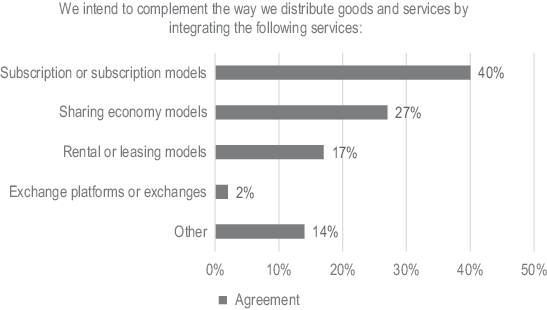
Source: )
Figure 1.1: The importance of new consumption models.
Subscriptions look back on a long history and are certainly not a completely new phenomenon (Baxter 2015; Janzer, 2015; Warrilow, 2015). Remember, for example, the milkman or milkwoman, still popular in the last century, who regularly delivered milk to the front door. Long before that, in the Middle Ages, subscriptions were offered for geographical maps recording the constant changing of borders due to feuds and wars.
). Subscriptions have since developed into an interesting alternative to the so-called one-off purchase of goods and services.
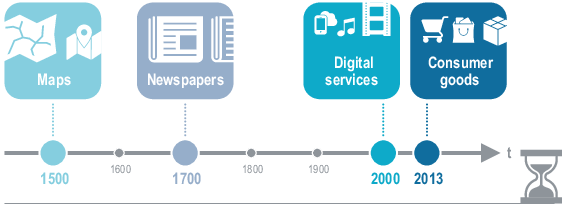
Source:
Figure 1.2: Development of subscriptions.
The emergence of subscriptions is driven by a fundamental change in consumer behavior: Today, consumers expect ever greater convenience, which subscriptions can offer due to their automatisms. Consumers also seek ever greater inspiration, which subscriptions can provide via surprise mechanisms. Many consumers ). This figure is on par with the US, where roughly 15 percent of consumers bought a product subscription in 2017.
Subscribers belong to the Early Market (so-called Innovators and Early Adopters), that is, consumers who like to try out new offers. In addition, the risk propensity of subscribers is significantly higher than that of non-subscribers. Subscribers tend to be younger and have a higher gross household income. They see themselves as market and product experts, tend to be more risk-averse, and consider shopping to be more of an adventure. Men tend to be more interested in self-determined automated purchasing (e.g., razor blade subscriptions), while hedonic subscriptions with a surprise factor (e.g., cosmetics surprise boxes) are increasingly bought by women.
Font size:
Interval:
Bookmark:
Similar books «Consumer Goods Subscriptions»
Look at similar books to Consumer Goods Subscriptions. We have selected literature similar in name and meaning in the hope of providing readers with more options to find new, interesting, not yet read works.
Discussion, reviews of the book Consumer Goods Subscriptions and just readers' own opinions. Leave your comments, write what you think about the work, its meaning or the main characters. Specify what exactly you liked and what you didn't like, and why you think so.

